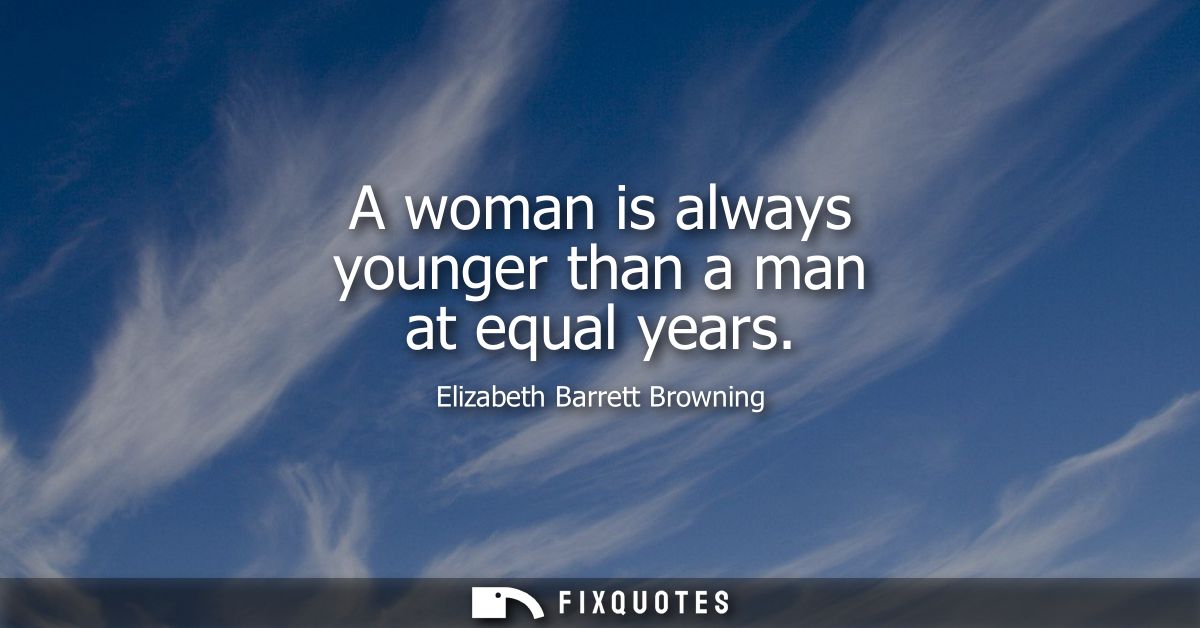"A woman is always younger than a man at equal years"
About this Quote
Elizabeth Barrett Browning’s assertion, “A woman is always younger than a man at equal years,” captures a complex interplay of social perception, gender expectations, and the mystique often associated with femininity in her time. The statement hinges on more than just chronological age; it invites reflection upon the ways society perceives and assigns value to women and men as they age. Browning, writing during the Victorian era, a period mindful of gendered double standards, recognized that women were often regarded through an aesthetic lens where youthfulness became a prized attribute.
Under societal conventions, women were expected to maintain an air of vitality, innocence, and beauty for far longer than their male counterparts. This pressure helped shape the belief that a woman retains a certain freshness or lightness even as she accumulates years. There is a delicate suggestion at play: the implication that women possess an enduring spirit or a more sheltered existence, which supposedly preserves their youthful aura. Masculinity, by contrast, traditionally aged faster in the public imagination, marked by the burdens of responsibility, labor, and exposure to the world’s harsh realities. Men, bearing the signs of age as badges of experience or gravitas, were understood to transform, not merely in physical appearance, but in social role and demeanor.
Implicit, too, is the bittersweet undertone of Browning’s words. The cultural insistence that women remain “younger” emotionally or aesthetically can itself be more restricting than flattering, imposing unrealistic standards and pressures. Still, Browning may also invoke the notion of inner vitality, a suggestion that women nurture a capacity for hope, affection, and adaptability that can outlast the physical markers of age. By tying age to more than just the passage of time, Browning’s observation asks us to consider how much of aging, and youth, depends upon the attitudes and expectations embedded within a culture.
More details
About the Author

